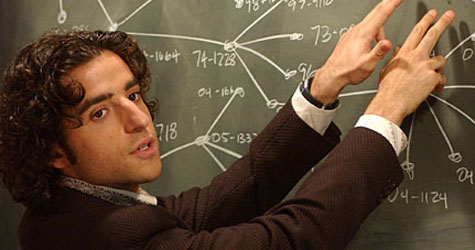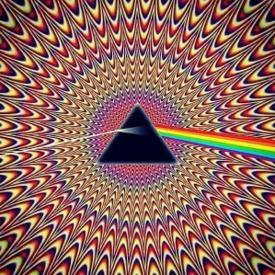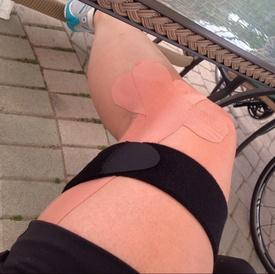Energy required to break covalent bonds of DNA

NicoleisQuantized
Posts: 344 Member
For those of you who fear microwave radiation:
The wavelength of light that is needed to damage DNA lies in the higher energy regions of the electromagnetic spectrum, the higher end of the Ultra-violet (10 x 10^-9 m to 400 x 10^-9 m), the X-Ray (0.01 x 10^-9 to 10 x 10^-9 m), or the Gamma (< 0.02 x 10^-9 m).
Microwave light lies in the low energy region of the electromagnetic spectrum, or 1 mm to 1 m.
Furthermore, the photon energy required to break one of the chemical bonds of DNA, if we use the canonical equations relating the wavelength of light to the energy of a photon:
E = hν
where E is the energy (J, Joules which is a unit of energy), h is Plank's Constant (6.626 × 10-34 J s), and ν is the frequency (s^-1) of the wavelength of light. The frequency is also expressed in terms of the wavelength
ν= c/λ
where c is the speed of light (2.9979 x 10^8 m/s) and λ is the wavelength of light (in meters, m).
So, the energy for a photon is
E = hc/λ
Plugging in the values for the speed of light, Plank's constant, and the higher enery end of the Microwave region, or 1 mm (1 x 10^-3 m), the energy of a photon is
E = [(6.626 x 10^-34 Js)(2.9979 x 10^8 m/s)]/ (1 x 10^-3 m) = 1.986 x 10^-22 J
Similarly, the energy of a photon in the lower and upper regions of the Electromagnetic spectrum are
E = [(6.626 x 10^-34 Js)(2.9979 x 10^8 m/s)]/ (400 x 10^-9 m) = 4.966 x 10^-19 J
E = [(6.626 x 10^-34 Js)(2.9979 x 10^8 m/s)]/ (10 x 10^-9 m) = 1.986 x 10^-17 J.
The energy required to break the covalent bonds (the class of bond that exists between all of the atoms in DNA), the most common being carbon-hydrogen (C-H), carbon-carbon (C-C), and carbon-nitrogen (C-N) have bond energies 413, 348, and 308 kJ/mol, respectively ( a mol means 6.022 x 10^23 constituent particles or atoms per mol; a mol is a unit).
So, the energy in the weakest bond (in this case the carbon-nitrogen bond) is
E = (308 x 10^3 J/mol)/(6.022 x 10^23 mol^-1) = 5.115 x 10^-19 J
THEREFORE, you need to be in the Ultra-violet region of the electromagnetic spectrum.
The wavelength of light that is needed to damage DNA lies in the higher energy regions of the electromagnetic spectrum, the higher end of the Ultra-violet (10 x 10^-9 m to 400 x 10^-9 m), the X-Ray (0.01 x 10^-9 to 10 x 10^-9 m), or the Gamma (< 0.02 x 10^-9 m).
Microwave light lies in the low energy region of the electromagnetic spectrum, or 1 mm to 1 m.
Furthermore, the photon energy required to break one of the chemical bonds of DNA, if we use the canonical equations relating the wavelength of light to the energy of a photon:
E = hν
where E is the energy (J, Joules which is a unit of energy), h is Plank's Constant (6.626 × 10-34 J s), and ν is the frequency (s^-1) of the wavelength of light. The frequency is also expressed in terms of the wavelength
ν= c/λ
where c is the speed of light (2.9979 x 10^8 m/s) and λ is the wavelength of light (in meters, m).
So, the energy for a photon is
E = hc/λ
Plugging in the values for the speed of light, Plank's constant, and the higher enery end of the Microwave region, or 1 mm (1 x 10^-3 m), the energy of a photon is
E = [(6.626 x 10^-34 Js)(2.9979 x 10^8 m/s)]/ (1 x 10^-3 m) = 1.986 x 10^-22 J
Similarly, the energy of a photon in the lower and upper regions of the Electromagnetic spectrum are
E = [(6.626 x 10^-34 Js)(2.9979 x 10^8 m/s)]/ (400 x 10^-9 m) = 4.966 x 10^-19 J
E = [(6.626 x 10^-34 Js)(2.9979 x 10^8 m/s)]/ (10 x 10^-9 m) = 1.986 x 10^-17 J.
The energy required to break the covalent bonds (the class of bond that exists between all of the atoms in DNA), the most common being carbon-hydrogen (C-H), carbon-carbon (C-C), and carbon-nitrogen (C-N) have bond energies 413, 348, and 308 kJ/mol, respectively ( a mol means 6.022 x 10^23 constituent particles or atoms per mol; a mol is a unit).
So, the energy in the weakest bond (in this case the carbon-nitrogen bond) is
E = (308 x 10^3 J/mol)/(6.022 x 10^23 mol^-1) = 5.115 x 10^-19 J
THEREFORE, you need to be in the Ultra-violet region of the electromagnetic spectrum.
0
Replies
-
 0
0 -
Okay. Now the subject makes sense. I was originally pretty stumped by why we were talking about covalent bonds on MFP.0
-
Waves are too big0
-
I like it...I have no idea what it says, but I like it!0
-
 0
0 -
Now you've got me all hot and bothered0
-
I was just thinking the same thing0
-
 0
0 -
I don't fear microwave radiation but I would fear a test on that^.0
-
I use microwaves to heat hot toddies.0
-
I hope this means that microwaves are safe. Lots of crazy threads on microwaves lately.
 0
0 -
There are these numbers and letters n stuff...and they mean really cool things...and then bad people go to jail, and good people live forever and eat out of microwaves!!!!
 0
0 -
I don't fear microwaves, but I fear engineers and anyone else who thought differential equations and linear algebra were "fun" courses.0
-
I don't fear microwaves, but I fear engineers and anyone else who thought differential equations and linear algebra were "fun" courses.
I'm an engineer. DiffEq was NOT fun. Just for the record.
Physical chemistry was fun. We blew stuff up.0 -
I don't fear microwaves, but I fear engineers and anyone else who thought differential equations and linear algebra were "fun" courses.
I'm an engineer. DiffEq was NOT fun. Just for the record.
Physical chemistry was fun. We blew stuff up.
Oh good! You're infinitely less frightening than the engineers I've known irl. I'm not big on blowing things up-but to each his or her own-as long as we agree that differential equations is not a good time-then we have common ground.0 -
I don't fear microwaves, but I fear engineers and anyone else who thought differential equations and linear algebra were "fun" courses.
I'm an engineer. DiffEq was NOT fun. Just for the record.
Physical chemistry was fun. We blew stuff up.
Magnesium?0 -
So, you can put the cat in there . . . .0
-
Ok, I don't know squat about chemistry and physics aside E=MC2... But this thread is getting really interesting!
 0
0 -
I am invoking the Heisenberg uncertainty principle as well as the second law of thermodynamics in understanding this.....hmmm,,, seems reasonable.0
-
So, you can put the cat in there . . . .
Schrodingers?0 -
Plus the waves won't fit through the little holes.
 0
0 -
I don't fear microwaves, but I fear engineers and anyone else who thought differential equations and linear algebra were "fun" courses.
I'm an engineer. DiffEq was NOT fun. Just for the record.
Physical chemistry was fun. We blew stuff up.
Magnesium?
All kinds of stuff in a bomb calorimeter to measure the energy.0 -
Nice explanation, although I suspect not many people will actually go through it. You don't even need to discuss a specific bond or molecule, the energy of microwaves is too low for any chemical reaction. Usually what I say to people is that microwaves have less energy than infrared/heat, so no need to worry0
-
I'm going to climb inside a microwave right now.
If I don't come back out, it's your ***, physics kid.0 -
I don't fear microwaves, but I fear engineers and anyone else who thought differential equations and linear algebra were "fun" courses.
I'm an engineer. DiffEq was NOT fun. Just for the record.
Physical chemistry was fun. We blew stuff up.
Oh good! You're infinitely less frightening than the engineers I've known irl. I'm not big on blowing things up-but to each his or her own-as long as we agree that differential equations is not a good time-then we have common ground.
Engineer here tooo!! I HATED DiffEQ, mostly because my teacher was a jerk and it was the first C I ever got in college. I did like linear algebra though, it was pretty cool.0 -
that's so funny i was just thinking about this!
-___-0 -
I am invoking the Heisenberg uncertainty principle as well as the second law of thermodynamics in understanding this.....hmmm,,, seems reasonable.
You forgot the Bernoulli equation . . . . since we are talking complete nonsense.
Even a dog knows that.0 -
I love differential equations.0
-
Nice explanation, although I suspect not many people will actually go through it. You don't even need to discuss a specific bond or molecule, the energy of microwaves is too low for any chemical reaction. Usually what I say to people is that microwaves have less energy than infrared/heat, so no need to worry
But saying it like that wouldn't be as hot!0 -
I don't fear microwaves, but I fear engineers and anyone else who thought differential equations and linear algebra were "fun" courses.
I'm an engineer. DiffEq was NOT fun. Just for the record.
Physical chemistry was fun. We blew stuff up.
Oh good! You're infinitely less frightening than the engineers I've known irl. I'm not big on blowing things up-but to each his or her own-as long as we agree that differential equations is not a good time-then we have common ground.
Engineer here tooo!! I HATED DiffEQ, mostly because my teacher was a jerk and it was the first C I ever got in college. I did like linear algebra though, it was pretty cool.
Engineer as well. DiffEQ was scary, vector calc was fun, our proff threw stuff around the class. We did not get to blow things up in p.chem 0
0
This discussion has been closed.
Categories
- All Categories
- 1.4M Health, Wellness and Goals
- 397K Introduce Yourself
- 44.2K Getting Started
- 260.9K Health and Weight Loss
- 176.3K Food and Nutrition
- 47.6K Recipes
- 232.8K Fitness and Exercise
- 456 Sleep, Mindfulness and Overall Wellness
- 6.5K Goal: Maintaining Weight
- 8.7K Goal: Gaining Weight and Body Building
- 153.3K Motivation and Support
- 8.3K Challenges
- 1.3K Debate Club
- 96.5K Chit-Chat
- 2.6K Fun and Games
- 4.6K MyFitnessPal Information
- 16 News and Announcements
- 18 MyFitnessPal Academy
- 1.4K Feature Suggestions and Ideas
- 3.1K MyFitnessPal Tech Support Questions


















